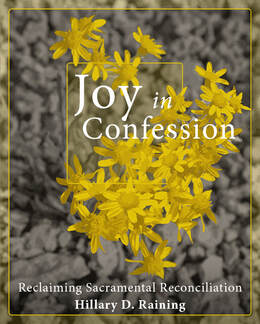rite of reconciliation
(confession)
Reconciliation of a Penitent ExplainedThe theological explanation of reconciliation is both complicated and simple. At its heart, reconciliation is the very cornerstone of our faith—the love of God proclaimed in the forgiveness and healing offered to us by Jesus. We often hear the phrases “Jesus died for our sins” or “Jesus died to save you.” Yet, understanding how that forgiveness works in our day-to-day life can be difficult. The Rite of Reconciliation exists so that we can live into the forgiving action of Jesus as found in his Body, the community of the Church, and as people of God.
In the Episcopal tradition, Reconciliation of a Penitent (as defined in the Book of Common Prayer) it “is the rite in which those who repent of their sins may confess them to God in the presence of a priest, and receive the assurance of pardon and the grace of absolution.” It is often referred to as “private confession.” Reconciliation invites us to leave our tombs (our sins and failings) and live the life God calls us to. Reconciliation means we become one again with our Lord and Savior—that we experience the Easter promise of new life. When people truly embrace and practice Reconciliation of a Penitent, they will be transformed—as will the world around them. What to Expect When Making ConfessionAlthough each location will be different according to your church’s traditions and the style of your confessor, here are some things that you can expect when you make a confession.
Begin your journey to reconciliation with prayer and self-examination. Knowing that this opportunity is a call to grace and not a call to feel shame, ask God for clarity in those parts of your life that may need healing and change. When you feel the desire to seek reconciliation, call your church to make an appointment with your priest or make note of any previously scheduled times of confession that are posted in your church. The place where you make your confession will be confidential and sacred. Very few Episcopal churches have confessional booths; however, if yours does, simply enter and either sit or kneel as the priest takes her or his place on the other side of the screen. If your church does not have a booth, you will most likely be invited to kneel at the altar rail or meet with the priest in his or her office. The confessor may sit facing you or in such a way as to not make direct eye contact with you; this may make the moment more comfortable for you and is a sign that your confessor is listening deeply on behalf of God. Using one of the reconciliation rites from The Book of Common Prayer, you will confess your sins and ask God for forgiveness. Don’t worry if you can’t remember everything! God knows what is on your heart. The priest may offer pastoral conversation and some spiritual practices (such as a psalm, prayer, or hymn to be said or something to do) to offer as a sign of penitence and an act of thanksgiving. The priest will then absolve you from your sins and remind you of the wonders of God’s grace and forgiveness that you have received. Spend some time in prayer afterward to revel in the freedom and joy that God offers you in this pastoral gift of reconciliation. |
Excerpt from Hillary Raining’s new book, Joy in Confession: Reclaiming Sacramental Reconciliation.
A reflect-and-work-book that invites readers to consider the potential that sacramental reconciliation might have for their own spiritual journey.
A reflect-and-work-book that invites readers to consider the potential that sacramental reconciliation might have for their own spiritual journey.

